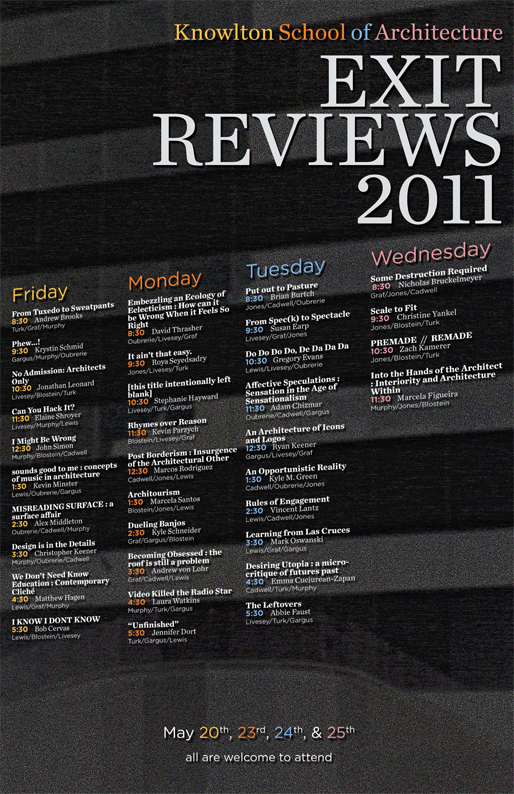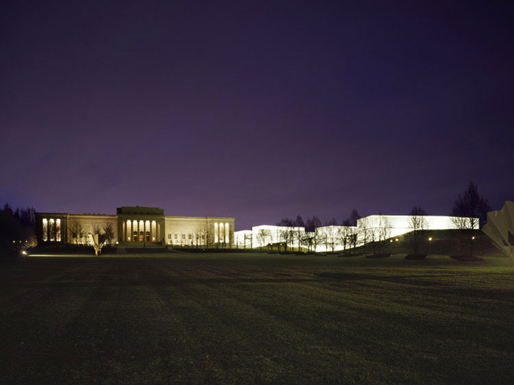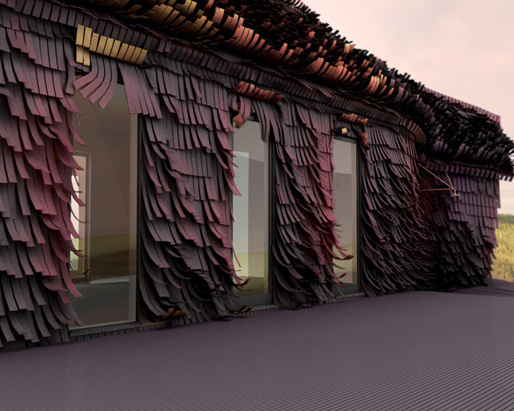
Sep '09 - Oct '11
So, Spring Quarter has come and gone, and thus, so has graduation. What a great two years it has been. Over the summer, I plan on posting some of the projects I never really finished updating everyone with - like the final fur studio work. So, be looking out for frequent posts as I begin to curate the work for portfolios and such.
For now, two immediate things should be mentioned.
First, two issues of our student journal One:twelve have been released. Issues 002 & 003 can be downloaded at our KSA Community page:
http://knowlton.osu.edu/onetwelve
Make sure to follow the journal on Facebook, Tumblr, and Twitter.
I'm super proud of the progress of this journal over it's first year. The student excitement and drive to make this happen has been so inspiring. I'm very excited to hand off graduate editing duties to my colleague Samuel Ludwig, and am really excited to see what this journal becomes. Please give them a read, and feel free to express comments and concerns to onetwelveksa@gmail.com
Last thing to mention concerns the Exit Reviews of our G3 class.
The Exit Review process is a very interesting final project that is our version of a thesis at the KSA. Our final ten weeks consist of a four-week seminar where we discuss historical and contemporary issues in architecture through various readings and group projects. This sets us up for the next four weeks where we meet with our individual tutors to write an oral presentation projecting ourselves into the discipline upon leaving school.
What's interesting about this is that it doesn't revolve around a singular project. Rather, you're forced to reflect upon yourself and your education and evaluate your interests in the discipline. Then, it all culminates in a series of individual 30-40 minute public lectures, where each student presents their paper to the school, faculty, and observers from the general public. Each presentation was really unique, and it was very interesting hearing so many viewpoints and seeing what each person in the class was interested in.
My presentation was essentially investigating the sensations, moods, and affects within architecture by looking through a musical lens and exploring melodic genres as related to architecture in order to create a polyvalent melodic architecture. Not meant as a final solution, my research tried to uncover the pieces of architecture that are "singable" and identify a beginning to realizing how to create polyvalent affects within the atmosphere of architecture.
Also published in Issue 003 of One:Twelve, I will post here an excerpt from my exit review entitled De Do Do Do, De Da Da Da. If you're interested in the full paper, please let me know. Enjoy!
De do do do, de da da da
They're meaningless and all that's true.
De Do Do Do, De Da Da Da, The Police
Meaningless, true. But what Sting and the Police were really showing was the true importance of melody in song and the attraction people have to the simple. “I was trying to make an intellectual point about how the simple can be so powerful,” Sting says in a 1988 interview with Rolling Stone. However, was this song really as simple as Sting would have it? Claiming true simplicity by way of reference to hits such as “Doo Wah Diddy Diddy” and “Da Doo Ron Ron,” Sting was actually expressing a sophisticated obsession with the vocal manipulations and improvisation of constructed melody.
Dating back to the early 1900’s, and popularized by musicians such as Louis Armstrong and Ella Fitzgerald, scat singing became a staple of American jazz as a way for vocalists to participate in the improvisational explorations of melody using their voice as an instrument. In essence, scatting becomes a personal expression of melody with specific characteristics that elicit moods and sensations derived from those melodies. The “do’s” and the “da’s” of the Police’s hit single may be simplified, but it demonstrates an intelligence that carefully constructed melody must be singable even after the track is over.
Now, a seemingly easy task is drawing an analogy between music and architecture, but not so much when the question becomes one of sensation and performance. Historically, architecture has formulas, or lists, for the creation of certain architectural projects. Le Corbusier revolutionized political theories in architecture through his Five Points. And in a more contemporary context, Robert Somol listed his five operations on how to do logo buildings and landscapes. But neither of these offer specific qualitative answers to architecture’s question of sensation and performance.
In order for affects in architecture to occur as the effect of performance, as scat singing would demonstrate musically, the discipline should recognize its inherent ability to create strings of sensations, moods, and affects into what I would like to call a melodic, singable architecture where the architectural sensation, or melody, cannot be reliant on the program - just as the melody of a song cannot be reliant on the lyrics.
This reminds me of Steven Holl’s Nelson Atkins Museum. Although a very elegant formal gesture, the full effect of threading the five boxes through the landscape is not realized until the boxes are illuminated at night. The lyric here, read formal gesture, is lost without the melody, read architectural sensation, rendering a singable architecture of mood and affect.
It is important, in this analogy, to realize the difference between hearing and singing melodies, and how one directly leads to the other. Where hearing a melody acts as a catalyst for sensationalizing the music being heard, singing a melody immediately arranges those sensations into personal moods and affects. When a melody is reproduced, or sung back, it is always inevitably an arrangement of the original. Whether it is off rhythm, off key, or both, the sung melody is not the written score, nor is it being performed the way the artist intended; you interpret the melody in your own way in order to create the way you sing it.
However, in order to effectively recognize a great melodic performance, especially in architecture, we must first look at the basic pieces of melodic construction both musically and architecturally. Therefore, in order to express the qualities of a melodic, singable architecture, it is important to break architecture down into a new set of classifications rid of the formal vocabulary and operations already established in the discourse. For these terms, we look to music theory and the genrefication of melodic compositions.
Melody Genres
People are able to identify themselves with melodies in a number of ways: communication, movement, emotional expression, vocal play, or full musical composition. Likewise, people identify themselves with architecture in a similar ways: structurally, rhythmically, affectively, descriptively, or theoretically. These classifications are the functions of melody, which appear in definite melodic activity through visible traces. As these traces of particular functions formalize themselves, they open up the corresponding melodic genre.
Through the understanding that melodic genres have particular functions, it implies a notion that all functions and genres may be capable of coexisting in a single melody. Architecture, like a melodic composition, offers individual examples of these genres, adapted from music theorist Gino Stepfani, in order to better recognize the achievement of the polyvalent melodic architecture. We will call these genres the spoken, the motorial, the descriptive, the expressive, and the musical.
So, how do we create a truly successful melody in architecture? A successful melody is one which is effortlessly suited for appropriation by the user - it is singable, and has many fuctions, or genres. In architecture, these fully constructed melodies allow for characterization, development of an architectural personality, and a richer sense of affect. This answer, we will call the polyvalent, or multi-dimensional, melodic architecture.
Polyvalent Melody
Under this guise, it is important to understand that the polyvalent is not a call for collage of styles or ideas. However, that is not to say that ideas of collage cannot be polyvalent. Instead, the polyvalent calls for a sensational architecture of appropriated melodic construct made of multiple genres. To understand this clearly, we must first look at polyvalent melodies as they exist in music.
Michael Jackson’s “Thriller” presents all five functions of melody in this masterpiece. Breaking it down, “Thriller” embodies the spoken through the famous Vincent Price rap; the motorial through the rhythm and specific dance sequences choreographed to the music itself; descriptive in the sound effects used to symbolize frightening noises; expressive in Michael’s use of dynamic vocal range between verse and chorus; and musical, not only in the ability to combine all melodic functions, but also in unique instrumental use of synthesizer technology.
This achievement relies on a more sensual kind of formalism that provokes a will to re-engage the physical world and move towards a melodic architecture that embodies the same formal expertise, only with a polyvalence - pushing it towards new territories and new audiences.
A true contemporary embodiment of the polyvalent is Jason Payne’s Raspberry Fields House. Located in the middle of raspberry fields in Utah, the House truly achieves a sensual formalism through formal and materialistic expressions. Raspberry Fields embodies a descriptive function through its reference to the restored school house. By reconditioning the existing structure, the house becomes descriptive offering a flavor of the past. More noticeable is the expressive, gestural curve and pinch at the entry of the house. This effect may seem superfluous, but it is the superficial bend in the form through expressive technique that sparks the descriptive function of the school house. Descriptive, expressive, and motorial are the shingles themselves. Their allusion to fur, or hair, performs as a descriptive melody; the rhythmic application and slow curling of the shingles reveals a motorial melody; and the texture gives the house a clearly expressive melody being full of body, weight, and color. What is important to notice about Payne’s house is the idea that melodic composition works at multiple scales in order to create the fully sensational composition. Not only does the project work with different formal melodic functions, but it also has a separate breakdown of sensual melodic functions, which begs the question, how can we further investigate the scalar negotiations between the melodic affects of architectural sensation and performance?
To be clear, a call for the melodic is not necessarily a decree for something novel. Instead, it brings architecture back to a more amiable set of terms like atmosphere, character, and mood, instead of the esoteric vocabulary of process and technique - except now we aren’t afraid to say so. We love the sensations of music - the sound and rhythm - and in architecture, the look and feel. These principles have been part of the architectural discipline for ages. However, until now, it has been taboo to speak of the superficial feel, sensation, mood, and affect. Instead, we’ve begun to look at architecture through a numb lens, as we do with all popular culture, for the quick, immediate reading of the hook, instead of the fully constructed melody. It is my conviction that a melodic, singable architecture makes a pivotal move in the direction of creating a full composition without losing its critical, performative capabilities. And thus, gives architecture the ability for true affective appropriation through many combinations of do’s and da’s.
See you soon.



No Comments
Block this user
Are you sure you want to block this user and hide all related comments throughout the site?
Archinect
This is your first comment on Archinect. Your comment will be visible once approved.